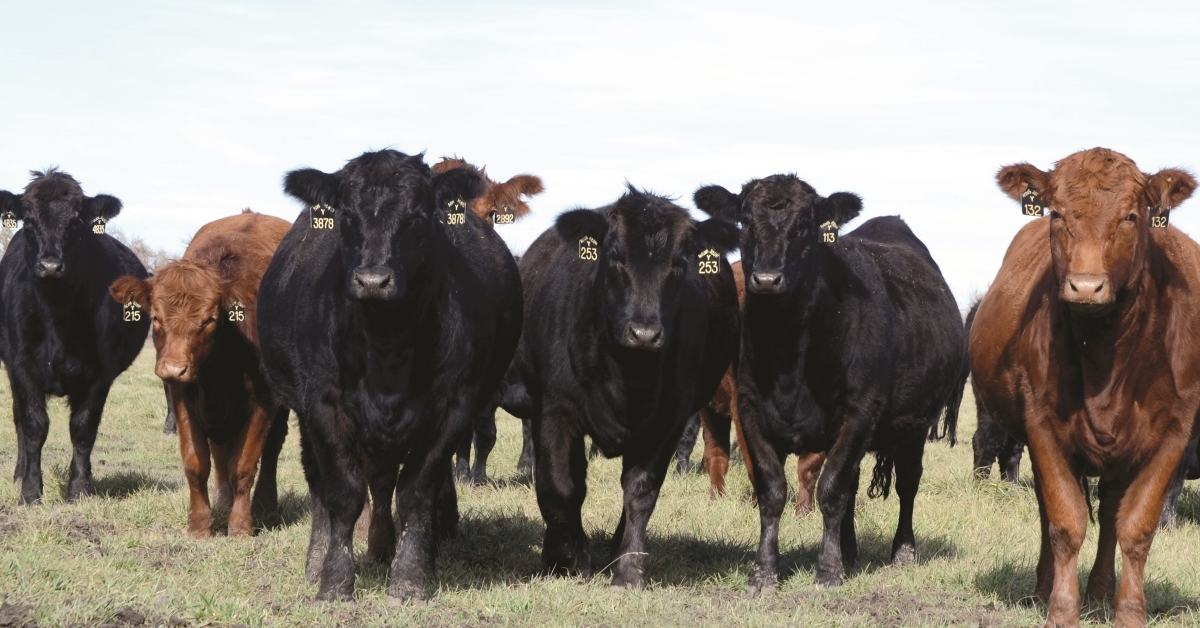
Focus on reproductive performance: Profitability of cow-calf operations is largely determined by cow reproductive performance. Calf crop percentage and average weaning weight are primary factors influencing both total income and cost of production. Consequently, the goal for most herds is to have a high percentage of cows wean a calf and for most of those calves to be born early in the calving season.
Nutrition plays a key role: Nutrition plays a key role in herd reproductive performance. A low level of nutrition before calving can lengthen the interval from calving to first estrus and reduce the percentage of cows cycling early in the breeding season. A low level of nutrition after calving can reduce the overall pregnancy rate, by reducing the total number of cows that cycle and by reducing the likelihood of pregnancy among cycling cows. Good nutrition before and after calving is essential to good reproductive performance.
Use body condition as a management tool: Body condition is a simple and effective way to monitor the nutritional status of the herd. Within the herd, cow nutrient requirements vary according to age, weight, stage of pregnancy and milking ability. Cow body condition reflects how well the available feeds and feeding practices are meeting those needs and can be a good tool to help manage feeding and grazing programs to achieve good reproductive performance.
Manage cows to calve in good condition: Body condition at calving is the key. Cows that calve in good condition give birth to healthier calves, who have a better chance of survival. They also tend to produce more milk and wean heavier calves. Additionally, cows calving in good body condition are more likely to rebreed early and remain a productive part of the herd.
Cows should go into winter in good condition: Winter is not a good time to try to build body condition. Nutrient requirements for pregnancy and cold stress are high, and young cows have additional requirements for growth. Most winter feeds cannot meet these requirements while simultaneously building body condition. Consequently, cows that enter winter in good condition have a better chance of calving in good condition.
Make good use of fall forages: Fall is the best time to build body condition, for several reasons. Cow nutrient requirements are relatively low. Cows are in the early stages of pregnancy, producing little or no milk, and the weather is mild. Abundant and relatively inexpensive fall forages are available for grazing. Mature native ranges, improved pastures, meadow re-growth, corn stalks, grain stubble and straw can all be good sources of energy. If properly supplemented to increase their digestibility and intake, these forages can exceed the modest nutrient requirements of dry cows in the fall and help build body reserves. When supplements are self-fed, they can also help improve distribution of cattle in the pasture, improve diet selection, increase grazing time and consequently increase total nutrient intake.
Fall supplements are especially helpful to first-calf heifers: These young cows are still growing and, are generally having a tough time competing with older cows in the herd. Mineral and protein supplements can really help young cows make good use of fall forages and gain body condition. Proper fall management of young females helps protect the two-year investment that has already been made in developing these replacements and helps ensure that they will remain a productive part of the herd.
Summary: Profitability in a cow-calf program largely depends on herd reproductive performance. Nutrition plays a key role. Cows should be managed to calve in good body condition. Fall is the best and easiest time to condition cows for calving. Mineral and protein supplements can help cows —especially young cows — make good use of a variety of fall forages and crop aftermath. Contact your local Hubbard Feeds representative for help selecting the proper supplement to help your cows make good use of fall forages and prepare for calving.
- Log in to post comments
